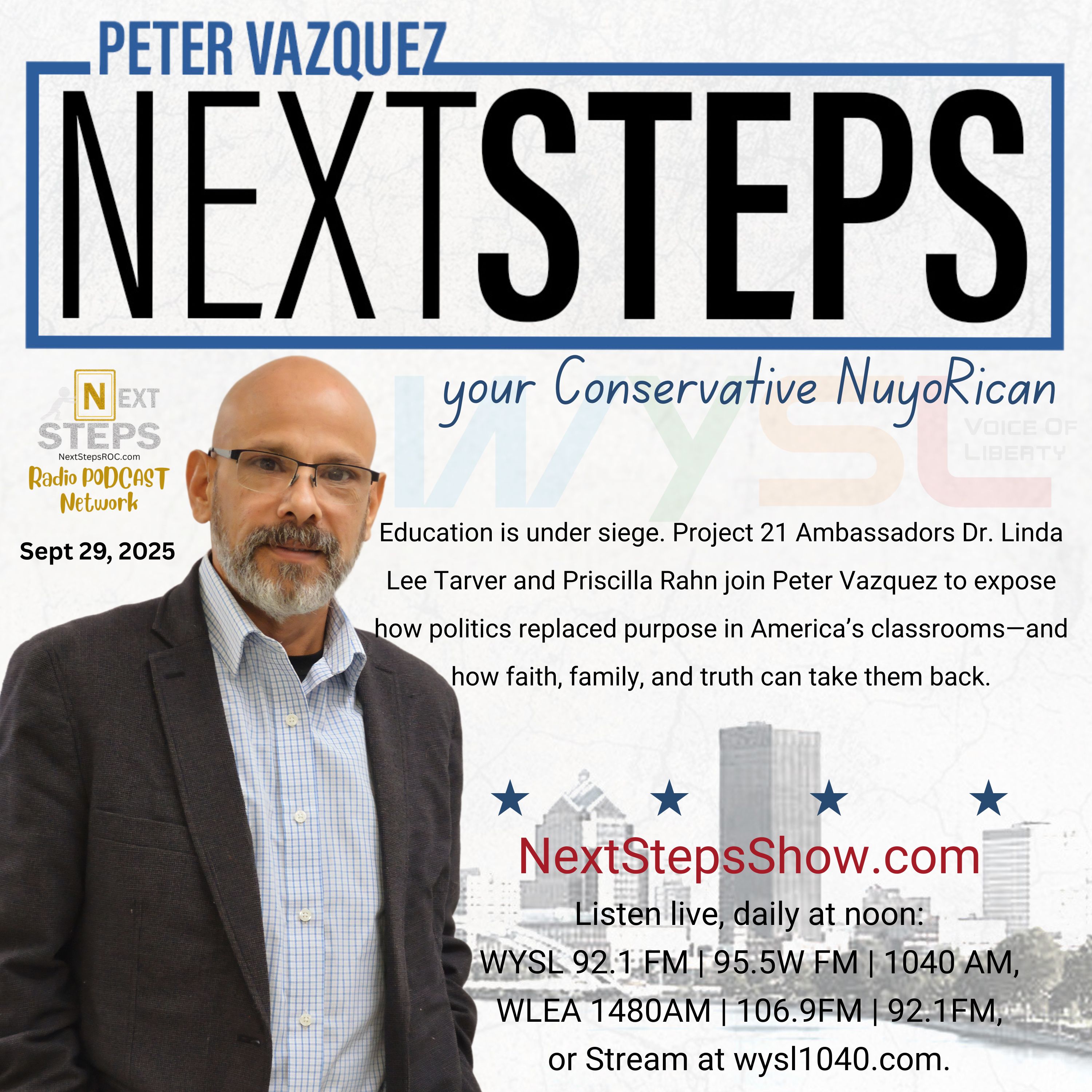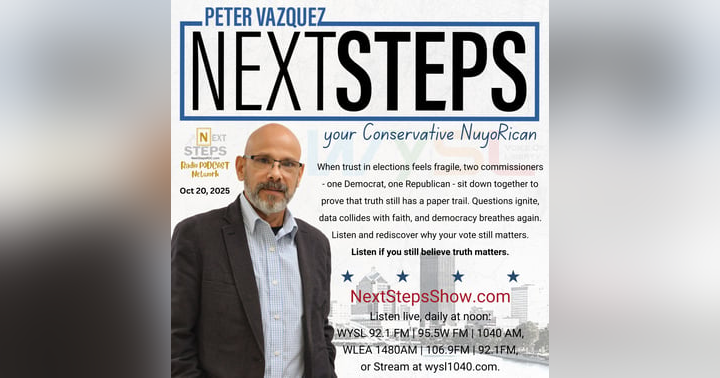
Failed education system: In 2016, a group of Detroit students filed a lawsuit against their own state, claiming they had been denied the right to read. The case was quietly settled during the pandemic, lost amid the noise of lockdowns and politics, but the truth it exposed still echoes: in America—the richest nation on earth—children had to go to court to demand literacy. That is not a tragedy from history; that is a mirror of our present.
That same pattern repeats in city after city. Here in New York, we spend more on education than any other state—more than thirty-six thousand dollars per student each year, almost twice the national average—yet our schools rank near the bottom in outcomes. In Rochester, only sixteen percent of students read at grade level, and just fourteen percent can do math proficiently. Over seventy percent are chronically absent. For all the money, the system is failing—and not by mistake.
Dr. Linda Lee Tarver, a Project 21 Ambassador and lifelong educator, calls it what it is: an intentional effort to keep people ignorant. “You must have gravy for the gravy train,” she told me. “And illiteracy ensures it.” She is not being rhetorical. Entire industries—administrative offices, testing firms, political groups, even parts of academia—prosper when students do not. Dependency is a business model.
National numbers tell the same story. More than half of American adults read below a sixth-grade level. About one in five struggles with basic comprehension tasks like reading instructions or comparing two paragraphs of text. A generation raised on slogans like “No Child Left Behind” has become a nation of adults left behind by design.
It used to be illegal to teach a slave or an Indigenous person to read. The reason was simple: a person who can read can think, and a person who can think cannot be controlled. Frederick Douglass said it plainly: “Knowledge unfits a child to be a slave.” That truth has not changed. What has changed is the sophistication of those who keep people uneducated. They no longer use whips or chains. They use failing schools, union politics, and the steady erosion of faith and family.
My own father, a humble man from Puerto Rico with only a third-grade education, understood this better than most. He worked hard, bought a house, and raised his family with the conviction that faith and education were inseparable. He used to leave me nickels on the table—“Do your homework, son,” he’d say—not because he had much to give, but because he knew learning was the key to freedom. He lived Proverbs 22:6: “Train up a child in the way he should go, and when he is old, he will not depart from it.”
That kind of homegrown wisdom is now mocked, replaced by programs that teach children to question their parents rather than honor them. Schools once supported families; now they compete with them. They tell children what to believe, what to feel, even what to call themselves. Classrooms have become laboratories for ideology rather than sanctuaries for learning.
This confusion—what I’ve come to call the Vanboolzalness Crisis—did not happen overnight. It crept in slowly, wrapped in the language of inclusion and progress. Children are taught that gender is fluid, that truth is subjective, and that their feelings define their identity. Pornographic materials appear in school libraries under the banner of “representation.” Teachers who question it are silenced. Parents who object are labeled extremists. It is not education; it is indoctrination disguised as empathy.
Meanwhile, the numbers decline. The National Assessment of Educational Progress reports that only thirty-three percent of American fourth graders are proficient in reading and just thirty-six percent in math. In U.S. history, the proficiency rate among eighth graders has fallen to thirteen percent. That means nearly nine out of ten students have little understanding of the country they live in.
Despite these failures, the education establishment celebrates itself. Bureaucrats tout “equity initiatives” while millions of children cannot read or write well enough to fill out a job application. New York spends billions more than the national average, yet achievement gaps remain stubbornly wide. Throwing money at a broken system does not fix it; it only rewards failure.
The teachers on the ground know this. One of them is Priscilla Rahn, a thirty-two-year classroom veteran and former union leader. She told me that teachers join the profession out of love for children and learning, not for politics. But politics is what they get. Training sessions focus on ideology rather than teaching methods. Those who question the agenda are ostracized. “It’s not about helping kids anymore,” she said. “It’s about controlling teachers.”
She’s right. Nearly forty percent of teachers identify as conservative, yet few feel safe expressing their views. In New York, ninety-five percent of public school teachers are unionized, and those unions have raised more than fourteen million dollars in recent election cycles—ninety to ninety-five percent of it funneled to one political party. Meanwhile, test scores flatline and morale plummets.
Union leaders earn half a million dollars a year while many teachers pay for their own classroom supplies. The political donations keep flowing, but the classroom results do not. If all that money actually went toward improving literacy, every child in Rochester would be reading by third grade. Instead, administrators boast that they might reach forty percent proficiency by 2029. That is not progress; that is surrender.
Across America, the same trend repeats. The system measures success by how much it spends, not by what it achieves. It rewards compliance, not competence. It values diversity in appearance but punishes diversity in thought. And through it all, families watch their children fall further behind—spiritually, intellectually, and emotionally.
Yet there is hope, and it begins with restoring what was lost. The first step is reclaiming literacy. Phonics, grammar, arithmetic, logic—these are not relics of the past; they are the tools of freedom. A child who can read critically and write clearly is a child who cannot be easily deceived.
Next comes restoring parental authority. Parents must have the right to know what their children are being taught and the courage to challenge what is wrong. Schools are not the primary moral educators of children; families are. The state exists to support, not supplant, the family.
Class sizes must shrink. A teacher with forty students cannot teach; she can only manage. True education happens when teachers have the time to mentor and connect. Smaller classes, focused instruction, and discipline would solve more problems than any new technology ever could.
Civics must return to the classroom. A child who does not understand the Constitution will never defend it. A student who cannot explain the Bill of Rights will not miss it when it is gone. Our founders understood that virtue and knowledge are the twin pillars of liberty. Samuel Adams once wrote, “If virtue and knowledge are diffused among the people, they will never be enslaved.” He was right then. He is right now.
And above all, faith must find its way back into the conversation. We cannot build moral citizens without moral foundations. The American experiment was designed for a moral and educated people. Without both, freedom becomes an illusion.
Every social crisis in America—crime, poverty, addiction, division—traces back to the breakdown of education and the family. When we stop teaching children to read and reason, we raise generations that cannot discern truth from deception. When we remove God, we remove purpose. When we silence parents, we silence accountability.
But we are not powerless. Across this country, parents are standing up at school board meetings, teachers are walking away from corrupted unions, and communities are rebuilding schools grounded in values that work—discipline, respect, and truth.
This fight is not political; it is moral. It is not about left or right; it is about right and wrong. It is about whether the next generation will live in freedom or confusion.
If you care about your children, your community, and your country, you must care about what happens in the classroom. Ask for the reading scores. Demand transparency. Support teachers who teach instead of preach. Restore respect for parents. Rebuild education on the bedrock of faith, family, and freedom.
Because when we lose the classroom, we lose the culture. And when we lose the culture, we lose the country.
It is time to take back both.
God bless these United States of America.



